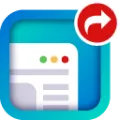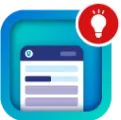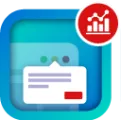Create a Custom Report Type
- From Setup, enter Report Types in the Quick Find box, then select Report Types.
- Click New Custom Report Type.
- Select the Primary Object for yourcustom report type. TipYou can choose from all objects—even those you don't havepermission to view. This lets you build report typesfor a variety of users.Once you save a report type, you can't change the primary object.If the primary object on a report type is a custom or external object, and that object is deleted, the report type and reports created from it are deleted.If you remove an object from a report type, all references to thatobject and its associated objects are removed from the reportsand dashboards based on that type.The name of the primary object is derived from the plural label field. The names of any related objects are derived from either the related list label field or the custom field that defines its relationship to the primary object.
- You can choose from all objects—even those you don't havepermission to view. This lets you build report typesfor a variety of users.
- Once you save a report type, you can't change the primary object.
- If the primary object on a report type is a custom or external object, and that object is deleted, the report type and reports created from it are deleted.
- If you remove an object from a report type, all references to thatobject and its associated objects are removed from the reportsand dashboards based on that type.
- The name of the primary object is derived from the plural label field. The names of any related objects are derived from either the related list label field or the custom field that defines its relationship to the primary object.
- Enter the Report Type Label and the Report Type Name.The label can be up to 50 characters long. If you enter a name that is longer than 50 characters, the name gets truncated. The name is used by the SOAP API.
- Enter a description for your custom report type, up to 255 characters long. If you enter a name that is longer than 255 characters, the name gets truncated.Provide a meaningful description so users have a good idea of which data isavailable for reports. For example: Accounts with Contacts. Report on accounts and their contacts. Accounts without contacts are not shown..
- Select the category in which you want to store the custom report type.
- Select a Deployment Status:Choose In Development during design and testing as well as editing. The report type and its reports are hidden from all users except those with the “Manage Custom Report Types” permission. Only users with that permission can create and run reports using report types in development.Choose Deployed when you’'re ready to let all users access the report type.Note A custom report type’s Deployment Status changes from Deployed to In Development ifits primary object is a custom or external object whose Deployment Status similarly changes.
- Choose In Development during design and testing as well as editing. The report type and its reports are hidden from all users except those with the “Manage Custom Report Types” permission. Only users with that permission can create and run reports using report types in development.
- Choose Deployed when you’'re ready to let all users access the report type.
- Click Next.





